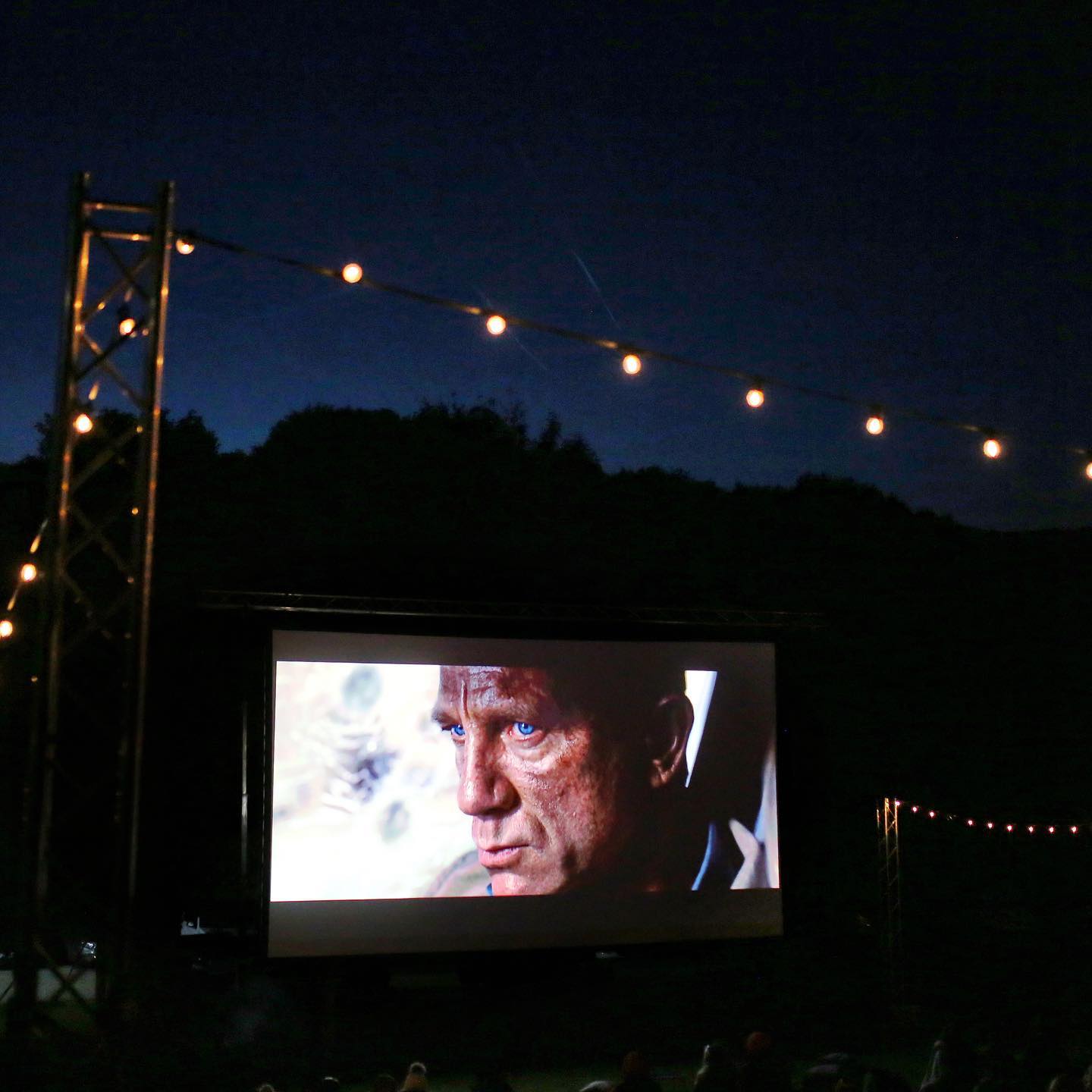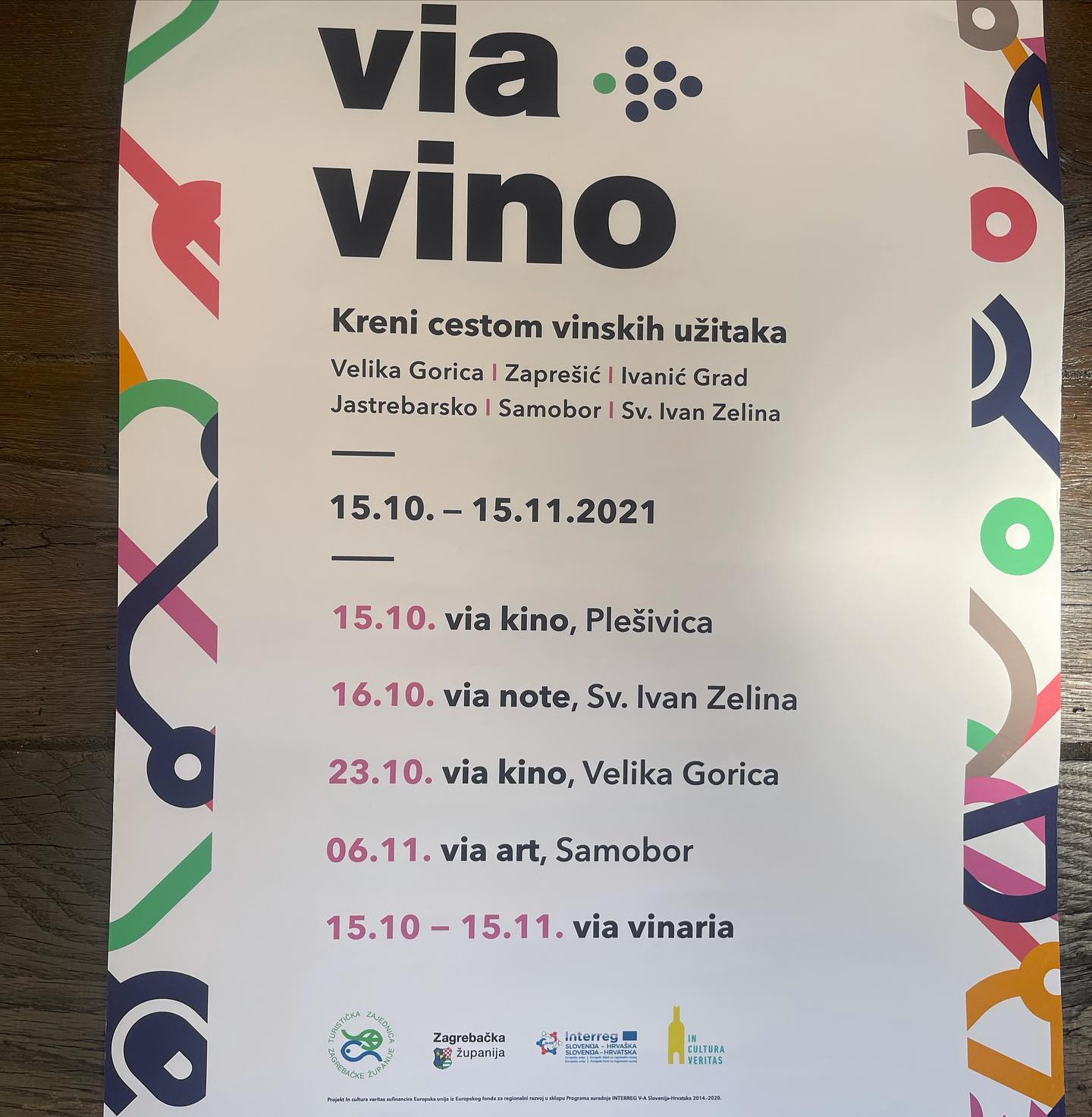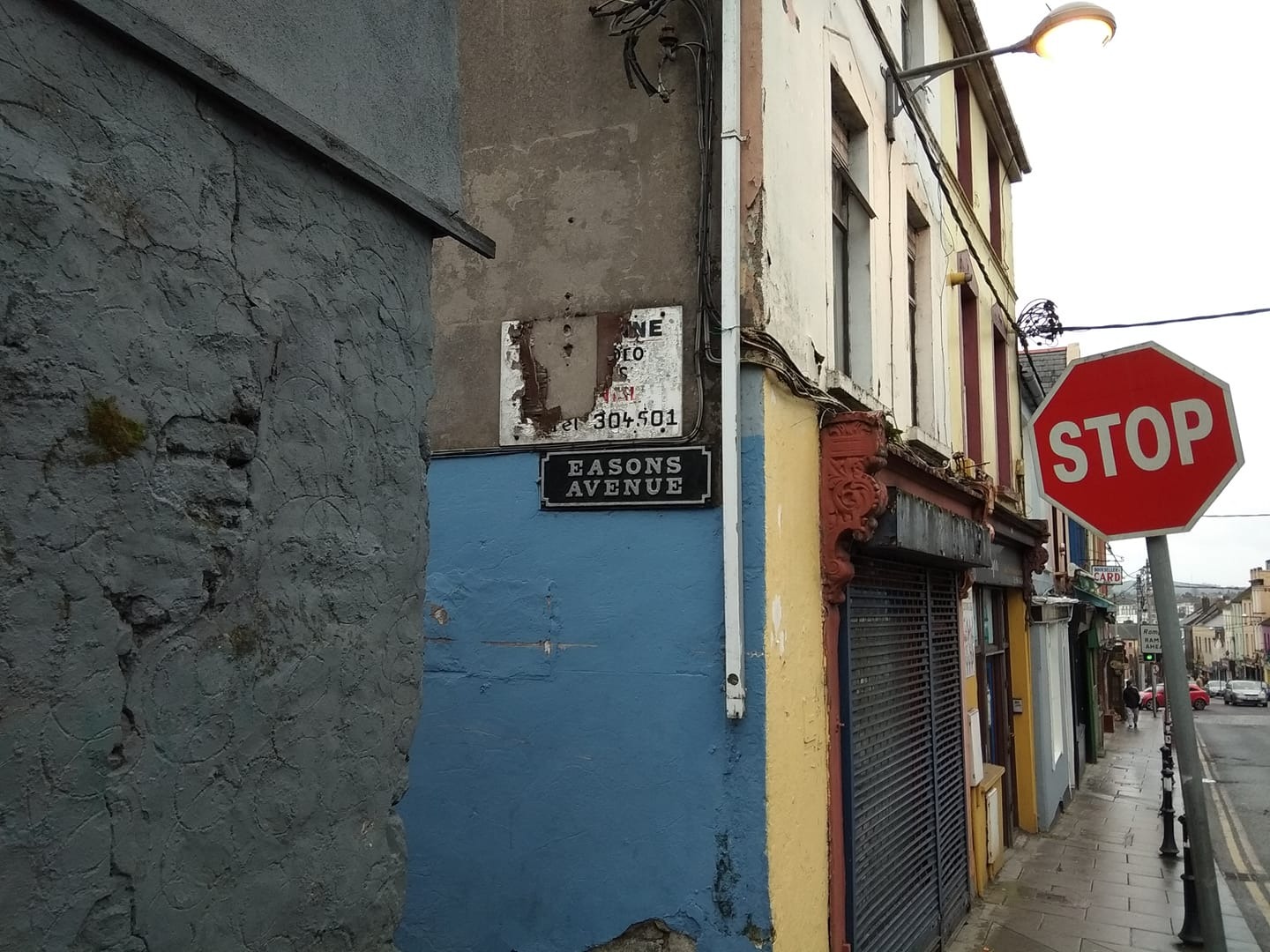Celebrate the Patron Saint of Wine with 'Wine & Walk Ludbreg'
October 17, 2021 - November sees the vineyards of Croatia paying tribute to their protector, St. Martin. Visit the largest St. Vincent statue in the world as part of Wine & Walk Ludbreg.
The one town in Croaita which has surprised me more than any other during my 18 years here has been Ludbreg, an hour north of Zagreb in Varazdin County.
I have made several visits since my first back in 2016, when I penned Ludbreg, the Most Fascinating, Unusual Little Town in Croatia?

And that was before I made many more discoveries about this town which appears to be similar to those around it at first glance, but...
I had no idea that Ludbreg was a wine town, for instance, or that it had its own wine road at a time that more celebrated destinations such as Dalmatia did not.
I also had no idea that for 30 years Ludbreg has been hosting the biggest international festival dedicated to young wines, which takes place in the town each January.
And i was truly surprised to learn that Ludbreg is home to the largest St. Vincent statue in the world, which overlooks the vineyards of the area. Sv Vinko as he is known locally, is a protector of vineyards.
The Feast of St. Martin falls on November 11, and it is celebrated each year on or around that date in many vineyards all over Croatia. Known as Martinje, the vineyards are blessed and the young wines sampled. It is an important and fun day for locals and visitors alike.
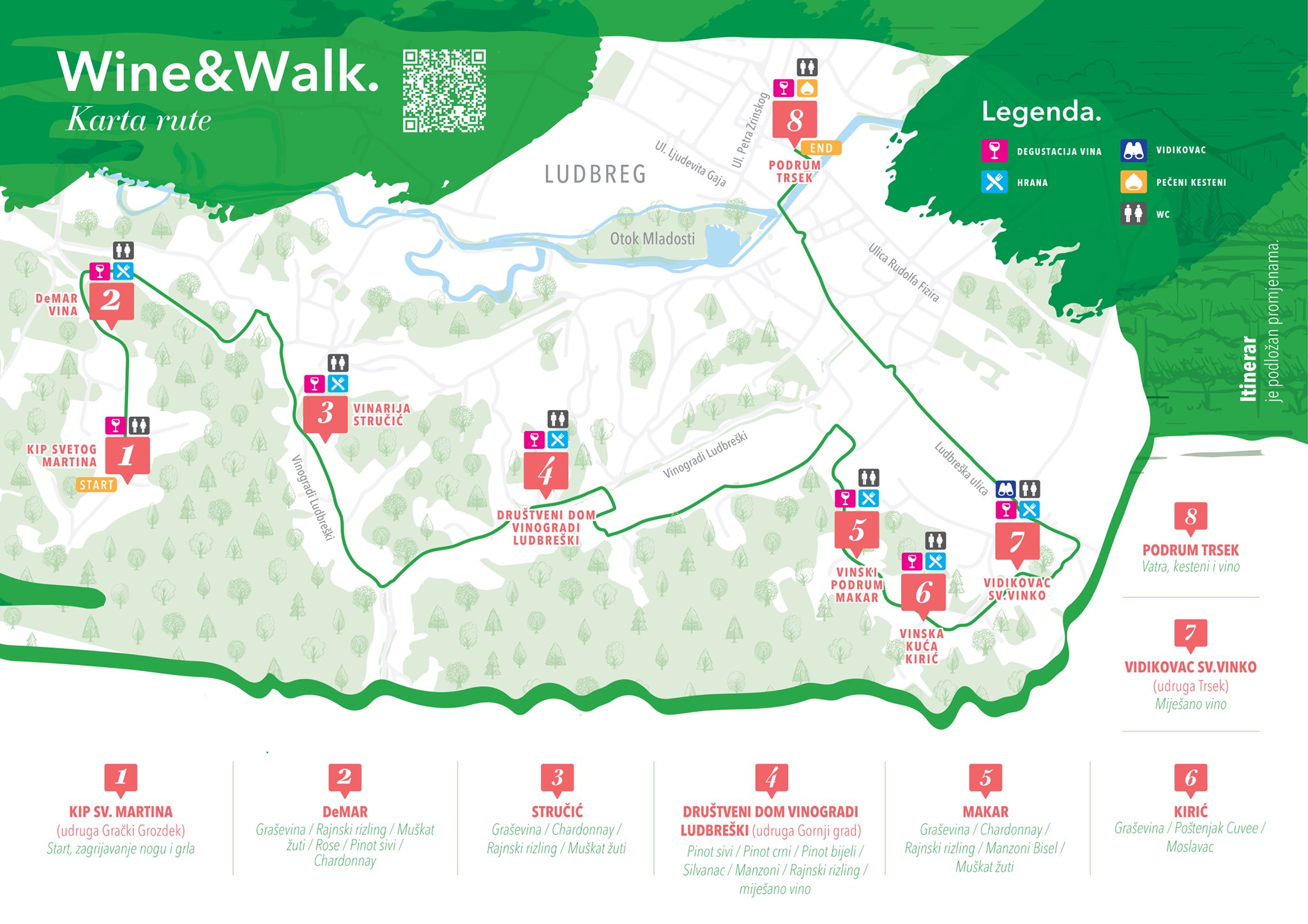
In order to mark this year's event, the Ludbreg Tourist Board, together with the town's winemakers, has organised Wine & Walk Ludbreg on November 6, a chance to get to know the town, wineries, food and nature of Ludbreg and the surrounding area. More from the tourist board:
A new eno-gastro recreational event takes you on an adventure through the vineyards and forests of Ludbreg.
"Wine & Walk Ludbreg" is a new eno-gastro recreational event intended for lovers of nature, wine, authentic, local gastronomic products, and walking.
Visitors will walk a new route inspired by the pilgrimage tradition of Ludbreg and the roads of St. Martin. The route, about 12 kilometers long, connects two "saints" - statues of St. Martin and St. Vincent which adorn the two hills that surround the city.
Participants will be guided through a wooded hilly landscape challenging enough to spend an active Saturday, and yet gentle enough for anyone looking for fun, socializing and recreation to go through.

Along the way, there will be tasting points or rest areas where winemakers will offer their authentic wines, local "snacks" and a breath of local culture and customs.
All participants of "Wine & Walk Ludbreg" will, with a registration fee of 150 kuna, receive a starter pack in which a special practical bag contains: a tasting glass, a route map, a voucher for participation and water, and at the start and, in particular, the finish will be fun and motivating.
Wine & Walk Ludbreg pilot is a release of a new tourist product Ludbreg which is strategically oriented in the direction of excursion, outdoor and gastro tourism. The term is located on the eve of the important wine holiday of St. Martin, and the walking route is inspired by the pilgrimage tradition of the Ludbreg region, which connects it with a number of similar ones across Europe, related to the name of St. Martin.
Ludbreg Wine & Walk will start on November 6 from 9:30 to 11:00, and completion is scheduled for 17:00.
For the latest news from Ludbreg, follow the dedicated TCN section.
Bringing History to Life for Kids with Roman Board Games at Iovia, Ludbreg
October 17, 2021 - Tired of watching the kids gaming on their gadgets? Take them back to Childhood as It Once Was and learn how to play Roman board games.
Getting kids interested in anything offline is getting harder and harder these days, but one place willing to try is the recently opened Iovia Archaeoogical Park in Ludbreg.
Iovia, which was opened by the Minister of Culture in May this year, documents several thousand years of Ludbreg history, with corresponding Croatian and global chronologies, as well as featuring two Roman villas next door. Located just a few mintutes from the church which houses Croatia's only certified miracle, as well as Ludbreg's most famous claim - the Centre of the World - Iovia is a great addition to an action-packed day trip to this most unusual town. You can learn more about the Iovia Archaeological Park here.
The top floor is home to a thoughtfully-designed seminar room, and one that will prove popular with kids when Iovia soon opens its doors to school eexcurisions. Among the interactive things to learn and try are a selection of Roman board games. There are three in all - Latrunkuli, Teri Lapilli, and Mlin - Merellus. A chance for kids to learn to play some new games offline, as well as to reflect, perhaps, on a childhood some 2,000 years before Instagram and Tik Tok.
Iovia has made available the rules of the game, and I have added some video guides from YouTube.
LATRUNKULI
Rules of the game:
In the game, two players face each other over a rectangular board marked with a grid of squares. Each player has the same number of chips, with one player differing from the other in color. In some versions of this game, each player also has a "dux", a special token with increased powers. The art of the game is in capturing the opponent's chips. The chips move all over the board and catch each other by surrounding each other; a token of one color caught between two others is removed from the game. The winner is the player who catches all the opposing parts.
TERNI LAPILLI
Rules of the game:
In the game, two players face off over a rectangular board marked by a square with nine squares (chip slots) connected by lines (two or four lines that intersect in the center). In addition to various square variants, wheel-like circular surfaces are also known. Each player has three chips, with one player differing from the other in color. The winner is the player who first combines three chips in a row. The game is considered the ancestor of the modern version of tic - tac - toe, and is often identified with one version of the ancient game Mlin or Merellus (Three men 's morris). Many details about this game have remained puzzling to this day. Lately, researchers of ancient games have challenged the application of the circular variant because it is likely that the incised wheels served as bases for other types of games, such as various throwing games.
MLIN - MERELLUS
Mlin (Mill) is a game for two players. The plate consists of three concentric squares and several transversals, making 24 points of intersection. Each player has nine chips, usually in black and white. Players take turns placing a chip anywhere on the board, trying to create a series of three of their own chips (mill). Each player tries to prevent his opponent from forming his own order. Whoever forms a row of three may remove one of the opponent's chips (provided it is not part of the whole row). Once all the chips have been placed, each player alternately moves one chip to the adjacent free spot. Then each tries to create rows and remove the opponent's chips once the player has only three chips left on the board, he can move his chip to any available space. The winner is the player who reduces the opponent to two chips.
You can learn more about Iovia Archaeological Park on the official website.
Learn more about Ludreg in the TC Ludbreg in a Page guide.
Dubrovnik Digital Nomads-in-Residence Giving Back at European Freelancer Week
October 17, 2021 - European Freelancer Week kicks off tomorrow, with participants in the Dubrovnik Digital Nomads-in-Residence taking part in events in both Split and Dubrovnik.
It is a year since the first-ever dedicated digital nomad conference in Croatia. Dubrovnik for Digital Nomads was held this time last year as part of European Freelancer Week, an event delivered by Saltwater Nomads, TCN, the City of Dubrovnik, and Dubrovnik Tourist Board.

One of the highlights of the conference was the virtual presentation by Kashlee Kucheran, co-owner of the influential Travel Off Path website and community, which is dedicated to travel information for remote workers. You can read Kashlee's subsequent interview with TCN in full here, but one of the quotes of the conference - and I will confess that it surprised me a little - was in Kashlee's slide above, that Croatia was the Number 1 Digital Nomad Country in her opinion.

Fast forward a year, and it appears that a growing number of nomads are beginning to agree with her, as Croatia was named the second-most liked country by users of Nomad List in a major survey recently.
There is no conference in Dubrovnik for this year's European Freelancer Week (but watch this space for 2022), which runs from October 18-24, but there will be plenty of activity for participants of the award-winning Dubrovnik Digital Nomads-in-Residence program, which was delivered by the same team in April this year.
Saltwater Nomads will be offering a week of free coworking in Split, as well as hosting what should be a very entertaining evening of good food, wine and conversation with Charlie and Sam Brown, two of the stars of the DNIR programme.
Charlie and Sam Brown: from couple to colleagues to competitors (but still a couple!)
British digital nomad couple Charlie and Sam Brown talk about how they sold everything they own, from their successful wine business (voted the best Independent Wine Shop in the UK!) to their house for a life on the road.
They are now both freelance writers in the same field, so have gone from being colleagues to competitors.
They'll be talking about everything Life on The Road, from giving up everything they own in their mid-thirties when most of their friends were settling down, to the challenges (and advantages) of travelling as a couple, to what it's like working together, then against each other...
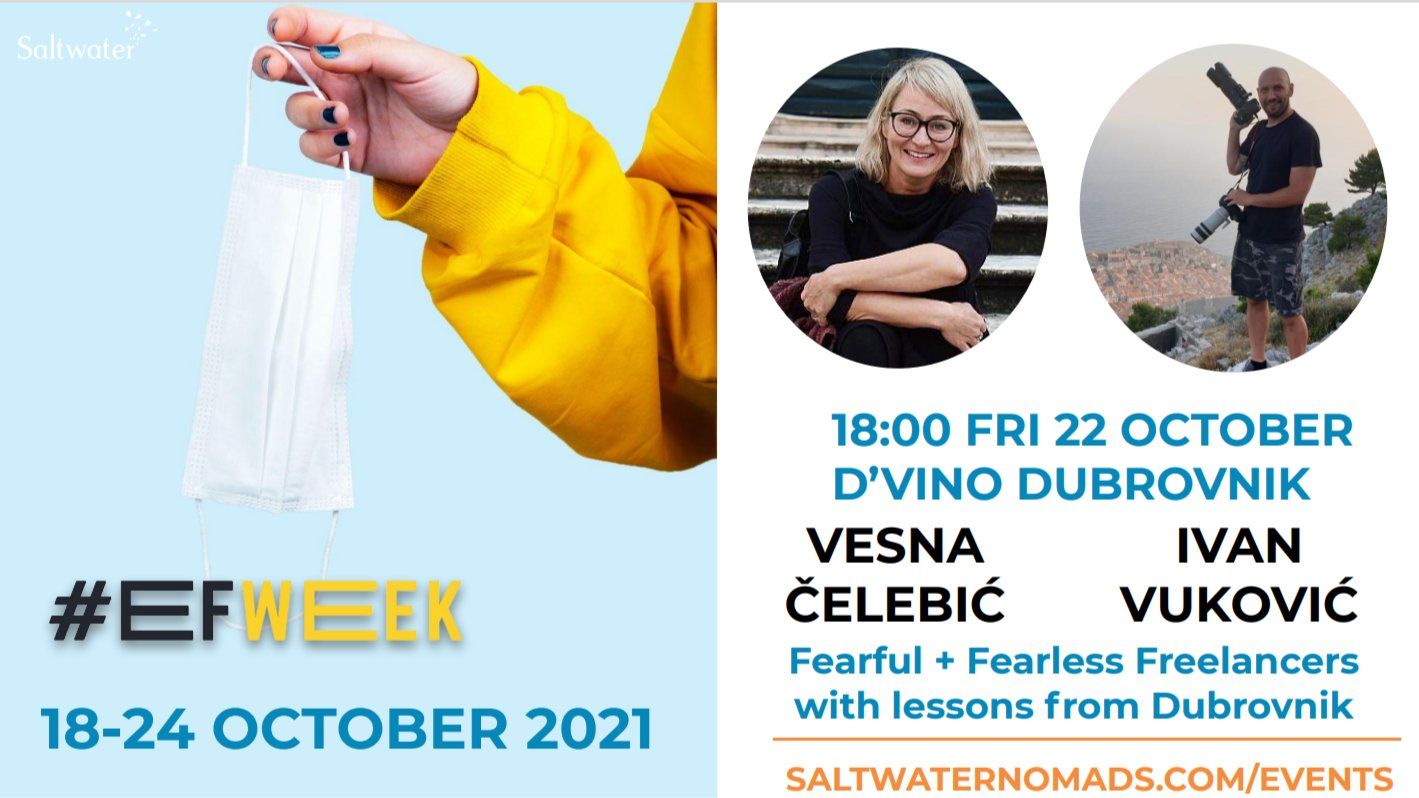
Meanwhile in Dubrovnik two of the very active contributors to the DNIR programme from the local Dubrovnik community, Vesna Celebic and award-winning photographer, Ivan Vukovic, will be hosting a wine night at D'Vino under the topic - Fearful + Fearless Freelancers with lessons from Dubrovnik.
Details of all the events here.
For more news and features about digital nomads in Croatia, follow the dedicated TCN section.
Croatian State Owned Companies to be Managed by New Institution
October the 17th, 2021 - A brand new institution is set to manage Croatian state owned companies as the country edges ever closer to Eurozone accession, and the response is likely to be a very mixed bag.
As Poslovni Dnevnik/Marija Brnic writes, the establishment of a new body for the management of state property, more precisely Croatian state owned companies, is currently being prepared. This is the result of the commitments that Zagreb has accepted within the process of introducing the euro as Croatia's official currency, in order to raise the efficiency and improve the quality and operations of Croatian state owned companies.
Last week, the government appointed a steering committee to work on an Action Plan for this task, and the competent Ministry of State Property, headed by Darko Horvat, has taken its first step - launching a public debate on a preliminary assessment of the new Law on Legal Entities owned by the Republic of Croatia, which intends to bring order to corporate governance policy.
The basis will be the guidelines given to the government this summer by the OECD, which proposes the establishment of a coordination body that will monitor the activities and results of all Croatian state owned companies, meaning the placing of all enterprises under state ownership across Croatia under one ''cap'' for monitoring and management.
This new body, according to the OECD, would be of the agency type directly accountable to the government or possibly located in a ministry, provided that it isn't in charge of enacting regulations.
It sounds like a mere formality and a new accumulation of administration, which the public will hardly welcome, especially if we remember the numerous transformations that the state-owned company management system has undergone in Croatia already, from the Privatisation Fund, the State Property Management Agency to the Centre for Restructuring and Sales. and now here's a special ministry in charge of state property.
However, the OECD claims that the introduction of such a specialised body is very necessary, because the existing system, although improved in the meantime, is still not up to par in any way, shape or form. That is likely not a shock to anyone who has had dealings with one of these companies.
In short, their analysis of Croatian state owned companies and the entire corporate sector identified a number of ambiguities and shortcomings that this new “unit” will seek to address, from regulatory inconsistencies to insufficiently defined ownership policy objectives in terms of financial and non-financial expectations, and incoordination and poor communication between ministries.
The new agency should not only gain a range of powers in overseeing management standards, monitoring performance and publishing public reports of these Croatian state owned companies, but also take on an important role in appointing supervisory boards.
More specifically, it would propose candidates, which, according to the OECD's estimates, would allow for greater expertise and a shift away from politics, which is desperately needed in Croatia. There is also the possibility that the new agency will get direct ownership in state owned companies, first for a small part of the portfolio, and gradually for the entire thing.
For more, make sure to check out our politics section.
Croatian Memgraph Company Celebrates Expansion and Investment
October the 17th, 2021 - The Croatian Memgraph company has been going from strength to strength of late, and further expansion as well as investments are currently being celebrated by this successful domestic company which hasn't even been on the scene for that long.
As Poslovni Dnevnik/Ivan Tominac writes, as recently as last week, the successful Croatian Memgraph startup announced an investment of 9.34 million US dollars.
The fact that investments accelerate various processes in business ventures isn't something new, so the Croatian Memgraph startup is planning some new moves that will further strengthen their already impressive market position. As they pointed out from the company at the very beginning, the process of finding an investment was long and challenging, but in the end - it was successful.
The situation with the coronavirus pandemic didn't succeed in demotivating them either, so they, led by a strong desire for progress, managed to find some kind of partners on the path to building success.
“The process of finding investment and new investors has been long and challenging, especially throughout the challenging coronavirus crisis and the uncertainty that came with it. Yet, in M12, Heavybit, IQT and other new investors joining us, we've found some ideal partners who are excited about the development of Memgraph, the opportunities we provide and the direction we're heading in. This investment will enable further product development and see us strengthen and expand our team,'' said Memgraph's Dominik Tomicevic.
When it comes to their technology, the Croatian Memgraph company has so far helped thousands of developers and engineers and brought them closer to the world of graph theory and provided insight into data they didn't have before.
"In addition to individual engineers, Memgraph also works with some of the world's leading production companies in the field of chemistry, as well as the world's leading financial institutions," added Tomicevic. The powerful analytical capabilities brought by data flows and graphs before the arrival of Memgraph were reserved for a group of “big tech” companies, and with Memgraph, everyone else can have their fair share of that formerly rather exclusive pie.
This technology is of strategic importance for a group of technology companies called FAANG - Facebook, Amazon, Apple, Netflix and Google, but also for companies like LSI Chemical. It is a global leader in the chemical research and development industry, and Memgraph has enabled them to improve their production systems.
“Memgraph has enabled us to create powerful models of entire production systems using a database graph, which has been a major business innovation for us. Memgraph's graphical analysis has enabled us to better understand our own processes, optimise them and make the right decisions to provide the best possible service for our customers,'' said Tobias Merz, the director of Global Operating Technologies at LSI. The aforementioned investment will also work to shake the status quo significantly, and will lead to yet more development for Memgraph.
Memgraph 2.0 primarily brings new data entry capabilities through data flow technologies (e.g. Apache Kafka), all this is on top of the static data that has so far been possible to enter (CSV files and so on).
“As a result, engineers will now be able to build their applications and have data flows as a basis. In addition to that, Memgraph 2.0 is so-called source available, which means that the Memgraph Community Edition is available with a BSL license, which means that the code is open for personal and commercial use,'' explained Tomicevic.
It doesn't need to be stated that investments naturally lead to new business steps and more development, which most often results in further employment and as such a stronger economy. These are the steps Memgraph is taking as well.
''The goal of this round of funding is to expand and further strengthen our team. Although we employ people throughout Europe and have engineers from Greece to the Netherlands, the main engineering hub will remain right here in Croatia. Given the high priority of Cloud product development, that's where we'll employ primarily Frontend (Angular) and Backend (NodeJS) engineers who want to join a smaller but agile and fast team and launch Memgraph into the Cloud. We're also going to hire C / C ++ engineers for our core team working on core technology and products,'' said the Croatian Memgraph's director.
Graphs can do a lot more than we can imagine, and Memgraph decided to prove it, as this company's main goal is to change the way some of the world’s most difficult problems are solved using the power of graph theory. Therefore, as Memgraph's director Tomicevic concluded, their plans are to provide development engineers with access to tools and knowledge of graphs to improve their applications and business processes on the whole.
For more, check out Made in Croatia.
Croatian Rasco's Lynx Charge e-Cleaner Hopes to Conquer Global Market
October the 17th, 2021 - The Croatian Rasco company is well known for its e-cleaners, primarily the Lynx system about which quite a lot has been written. They now hope to step out and conquer the demanding global market with their products.
As Poslovni Dnevnik/Darko Bicak writes, after presenting their innovative self-propelled cleaner (Lynx) two years ago, the Croatian Rasco company from Kalinovac near Djurdjevac recently presented the electric version of this utility cleaner under the brand Lynx Charge.
As explained by Ivan Franicevic, President of the Management Board of the Croatian Rasco company, the Lynx project was designed back in 2016, its realisation started a year later, and in the beginning it was developed through a diesel and electric variant.
"Lynx Charge has almost all the systems that an electric car boasts, which makes it an extremely complex product, and this is reflected in its price, which is twice as high as in the diesel version - standing at about 200 thousand euros. We worked on its development for three years and together with the diesel version, it's the crown of this company's 30 years of work.
This piece of Croatian innovation was made in cooperation with Rasco and the Faculty of Electrical Engineering and Computing in Zagreb. We'll offer it through our distribution network to more than forty markets around the world, but we'd be glad if the advantages of such an ecological vehicle are recognised by the Croatian communal services here at home,'' said Franicevic.
The innovation was co-financed with funds from the European Regional Development Fund in the amount of 14 million kuna, and they expect even more from the electric version as the market for eco-friendly vehicles continues to grow far more rapidly than is the case for those powered by fossil fuels.
Franicevic pointed out that currently, the demand for these types of vehicles, powered by all types of fuel, globally stands at about 2,000 units per year, and next year at least 30 percent of this figure is expected to be related to electric vehicles.
"There are already countries like the Netherlands and Denmark that have banned the procurement of fossil fuel-powered utilities, and this trend will only spread. As the Croatian Rasco company is one of the leaders in this type of technology, we expect to occupy about 20 percent of that market in the coming period. Although it's difficult to talk about some exact capacities now, because that's something which is likely to adjust through the investment cycle of demand, we'd be satisfied if we could deliver 100 vehicles a year in the coming years,'' Franicevic said, adding that they expect to deliver about 60 of their Lynxes this year.
The 72.5 kWh electric Lynx battery allows the user to work throughout their shift without the need for recharging. In particular, the vehicle has an autonomy of 6.5 to 7.5 hours of operation, and charging takes a mere 2-3 hours on any charger.
The sweeper is powered by an electric motor with a maximum power of 55 kW, and the two other electric motors with a power of 18.5 and 11.5 kW are used to drive the intake system and various other vehicle functions. All of this is integrated into a compact vehicle which is 4.5 metres long and only 1.3 metres wide, and the vehicle alone weighs just over four tonnes.
According to the manufacturer's own assessment, and based on customer experience and tests, the depreciation period for the diesel version of the Lynx is 3-4 years, and the electric version is 7-10 years. The life expectancy of the Lynx Charge is 10 years, and in this Kalinovac-based company, they already have projects for the repurchase and recycling of used Lynx Charge vehicles and their batteries.
The Croatian Rasco company has stated that they've already started out with the development of an even more sophisticated, and somewhat larger, vehicle for the same purpose, which will also be developed on several platforms - primarily using diesel, but at the same time in an electric version and a hydrogen version.
The company didn't want to speculate about the specific deadlines when these vehicles, especially the hydrogen ones, should see the light of day. Rasco manufactures about 80 different products for the winter and summer maintenance of all types of transport infrastructure - from motorways, through to expressways and urban areas to forest roads and watercourses.
Their plants in Kalinovac and in Senta in Vojvodina employ more than 400 people, and at the local level, they want to be one of the drivers of the development of northwestern Croatia, and on the other hand, their goal is to become the largest manufacturer of municipal equipment in all of Europe.
For more, check out our business section.
Company Investing 800 Million Kuna in Hotels on Beautiful Dalmatian Island
October the 17th, 2021 - One large and well known company is set to invest a massive 800 million kuna into creating new hotels and summer resorts on one beautiful Dalmatian island.
As Poslovni Dnevnik/Marija Crnjak writes, the Supervisory Board of the hotel company Helios Faros from Stari Grad on the island of Hvar has adopted the proposal of Capital Investments (Capex) for 2022 in the total amount of 223.2 million kuna, the company has reported.
This represents a continuation of investments in the repositioning of the tourist portfolio of this successful Hvar-based hotel company, which was taken over by the pension fund PBZ Croatia osiguranje (insurance) with a 78 percent share, and Valamar Riviera with a 20 percent share at the end of the bankruptcy proceedings which took place back in 2019.
According to Valamar, these investments are mostly related to the construction of Valamar's first sustainable eco-resort, the completion of investments in the Hvar Places hotel by Valamar, the construction of the Aquamar pool complex and the overall arrangement of the tourist zone.
“The nature resort is the new Valamar concept of a fully sustainable eco-resort positioned for family holidays. The construction of the resort will be achieved by respecting the highest standards of green building, which includes environmentally friendly materials with minimal impact on the environment, the use of renewable energy sources and a high level of energy efficiency. The Valamar nature resort on the island of Hvar is the first tourist project that will use prefabricated buildings and modular construction designed according to Valamar's accommodation quality standards,'' the company pointed out when discussing their next moves on this beautiful Dalmatian island which is popular with guests from across the globe.
The concept is inspired by nature and sustainable design, meaning that the future resort’s architecture will blend into this beautiful Dalmatian island’s stunning natural environment in the design of the buildings themselves, while the interior design will be ''signed'' by local designers and artists using local tradition and materials. Felled trees will be used in the landscaping, and each felled tree will be replaced with newly planted ones.
Great emphasis will also be placed on offering local food and groceries produced right there on the island by locals, while digitalisation will eliminate the use of paper throughout the hotel. The project is planned to be carried out in two phases during 2022 and 2023, and in order to realise all green initiatives in their full potential and acheive all aspects of sustainable development of the resort, the plan is to apply for so-called ''green'' EU funds for the project.
During the global coronavirus pandemic which well and truly marked the unprecedented circumstances of 2020, business operations Helios was restarted, and in 2021 the first renovated hotel, the Hvar Places hotel by Valamar, was finally opened.
Helios Faros' business development plan otherwise assumes investments totalling about 800 million kuna in sustainable high value-added tourism that will positively impact the island of Hvar's economic growth, the company said. By the year 2025, the reconstruction and construction of three more hotels and resorts of categories 4 * and 5 * with a total capacity of 700 accommodation units is planned.
For more, check out our business section.
Realities of Croatian Emigration to Ireland, Part 1: Accommodation
October 16, 2021 - We are delighted to welcome back Nikolina Demark, the TCN Writer of the Year in 2017, who is now back in Rijeka after her 3-year assignment to report on Croatian emigration to Ireland. Part 1 - the accommodation reality.
In October 2018, I moved to Ireland. I had one box of clothes shipped to my partner in Cork and boarded a plane with a carry-on and a backpack. My one-way ticket cost me €32.
A few years and one pandemic later, we’re back in Rijeka, Croatia. It was our plan from the start and we’re happy to be home again.
This isn’t a novelty: we followed in the footsteps of more than 20,000 Croatians who had moved to Ireland in the last decade or so. Some have returned, some have not. Countless reports and impressions have been sent our way from the Emerald Isle, and it often seems like there’s nothing more to be said.
Well, I’ll say a few things anyway. I’d like to offer an overview of my experience, but instead of pointing out the obvious in a few bullet points - The weather is bad! But there are many jobs to be had! - let’s take an in-depth look into the realities of moving to Ireland.
Starting with the most sobering reality of them all….
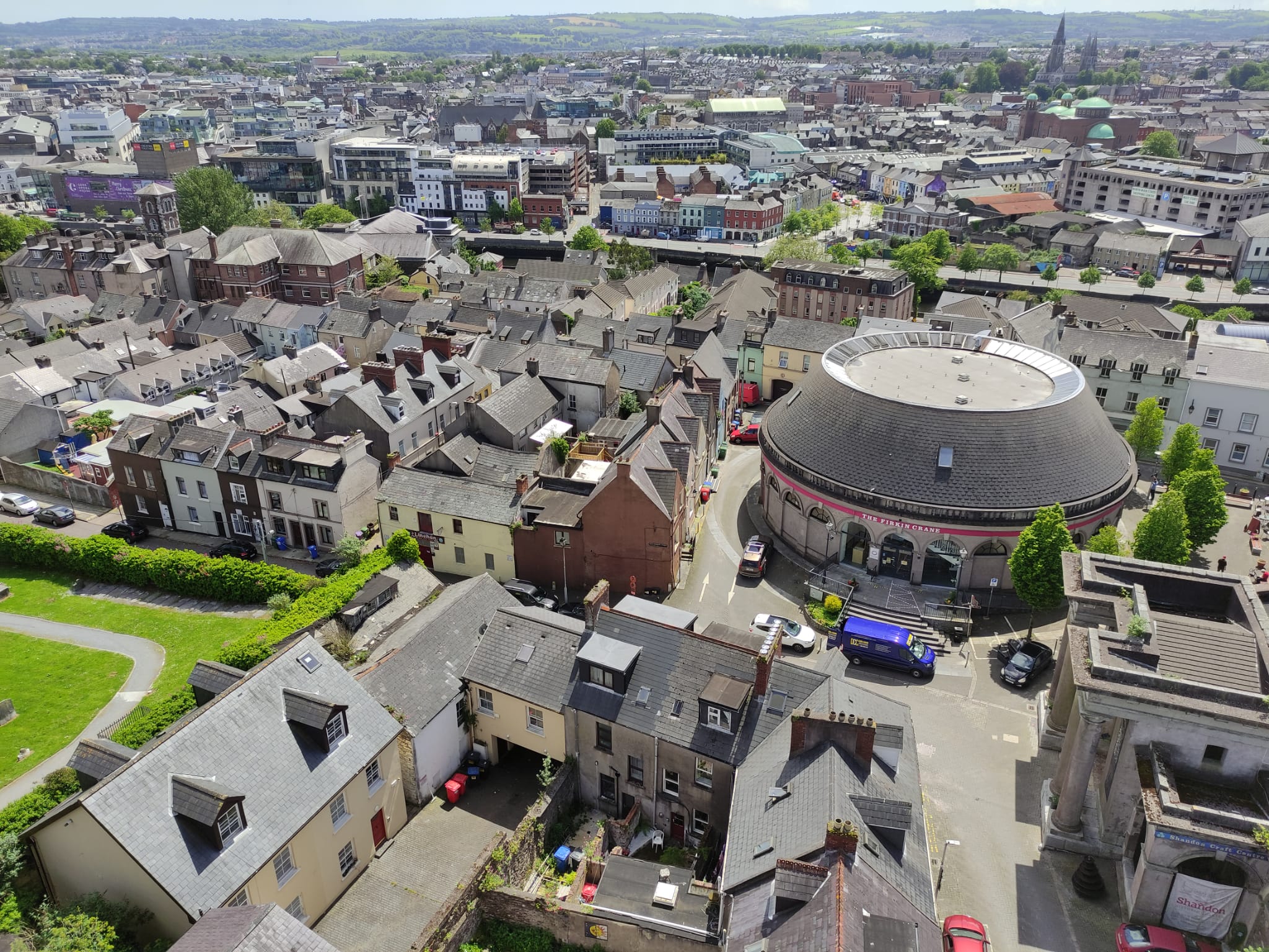
The rampant housing crisis.
It’s become a well known fact that it’s much easier to find a job in Ireland than a place to live. The situation has been dire for years now but keeps getting worse - whether you’d like to rent or buy, the housing crisis has everyone jumping through hoops to find accommodation. The hoops are on fire. Everything’s on fire.
There’s a critical shortage of homes to rent: in August 2021, there were only around 2400 properties available for rent nationwide. Outside of Dublin, that total drops to 800. In the entire country. Houses, apartments, rooms and sheds get scooped up as soon as the listings go live.
As I’m writing this, Daft.ie, Ireland’s leading property website, shows a total of 54 apartments available for rent in Cork city, which has a population of roughly 190k. All were listed in the last week or so, each having amassed a couple of thousand views already. I’d bet you a few have been taken off the market in the time it took me to finish this paragraph.*
The demand far outweighs the supply, allowing the landlords to dictate pricing as they see fit. Rent prices are skyrocketing and showing no sign of deflating anytime soon: the average monthly rent has doubled over the last decade, from €742 in 2011 to €1477 in 2021.** Dublin city tops the list with an average rent of €2035, followed by Cork city where the average currently stands at €1524.
Compared to that, our one bedroom apartment in Cork city center which we got for €1150 a month in late 2018 now almost seems like a fabulous deal. Cork city is a Rent Pressure Zone, meaning that the annual rent increase for any given property is legally capped at a fixed rate of 4%. This helps to a certain extent, but most property owners have been making the most of those 4% in recent years, squeezing every last available cent out of their tenants.***

Can you even afford that?
Technically, yes. But it’s not going to be much of a budget.
When I first moved to Ireland, almost 50% of my monthly paycheck went towards my share of rent and utilities - and my starting salary was more than the minimum wage. A raise or two later, the same cost of living was equal to a third of my monthly pay. It’s manageable, and I was getting by pretty well on the rest of my disposable income... but if I had pets, kids, a car, debt, or any other source of expenses, it would have been a different story. More on that in a future blog.
There are ways of cutting costs, of course. Shared accommodation is the most logical option, and the rental offer slightly expands when you’re looking to rent a single or double room instead of the whole property. This will cost you €500-600 a month on average, getting lower the further you move from bigger urban areas. However, the properties often have 4 or 5 bedrooms, and you can end up sharing a house with a few more flatmates than a typical Croatian is used to. It can be rewarding, but it’s also a gamble. I might have seen this as a fun living arrangement 10 years ago, but these days, I’m willing to pay a bit extra for some privacy. Anyone moving to Ireland with a partner and children probably won’t like this solution either.
Housing is cheaper in rural areas, but less populated places go hand in hand with less chance of finding work unless you’re fully remote. Commuting is an option, but can turn into a real headache - infrastructure in Ireland leaves a lot to be desired. Public transport is unreliable or even nonexistent in some places, and you’ll likely need a car to get to the office and back.
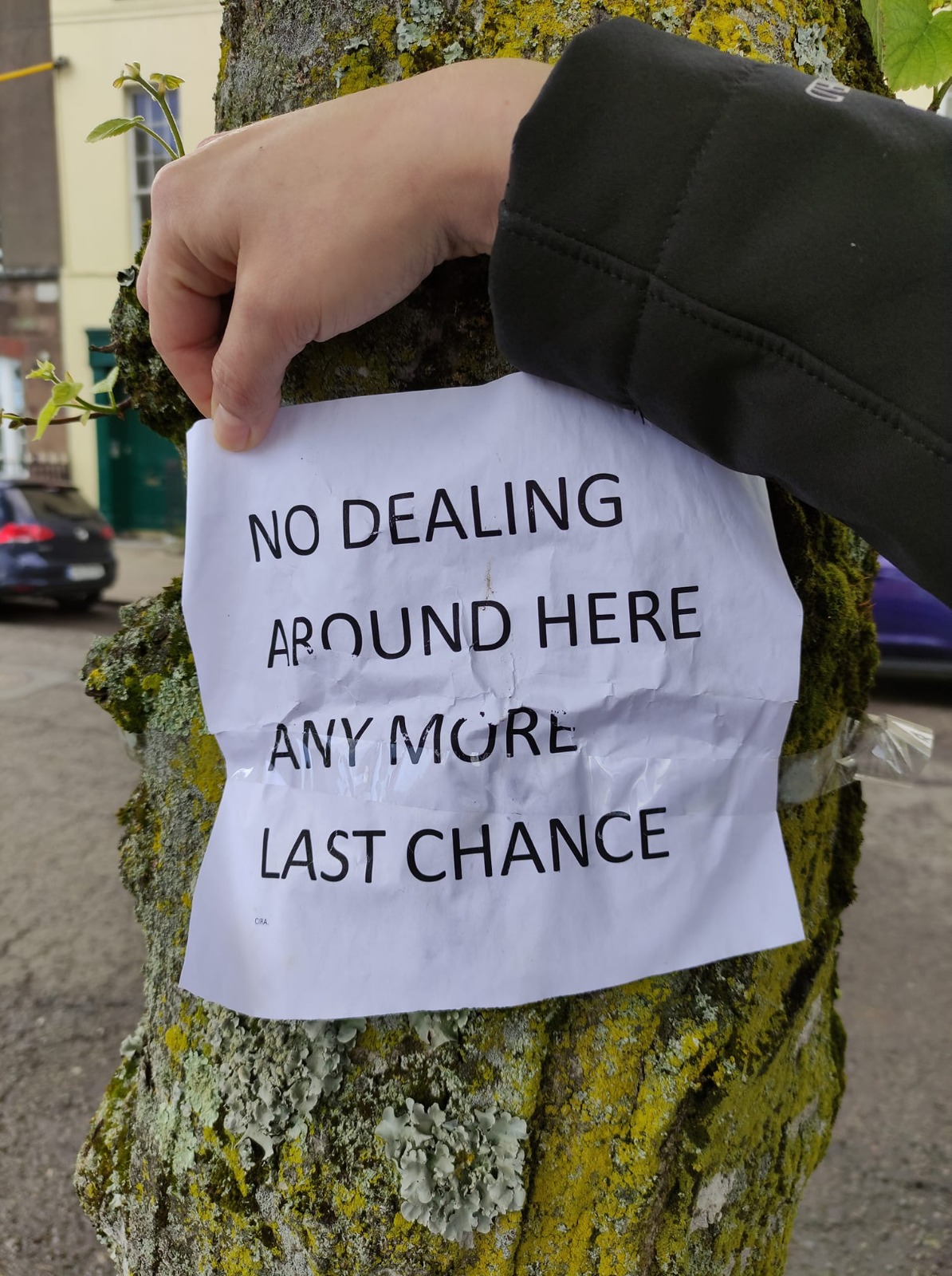
Even if you get lucky and score a place at a good location, consider that you’ll have to add a hefty security deposit on top of the first month’s rent in order to move in. This usually matches the monthly rent amount, but can be higher - e.g. we were required to pay a deposit of €1400 for the €1150 apartment mentioned above.
This means you’ll need to have close to €3000 saved up to rent a whole apartment in most urban areas in 2021 - a bit less in the suburbs or smaller towns, and quite a bit more if you’re starting a new life in Dublin. If you’re only renting a room, you’ll need around €1000.
And it’s not just a question of handing over the cash: you will typically need to provide a recommendation from your previous landlord, as well as proof of employment. Some landlords will require potential tenants to present a few months’ worth of payslips as proof of financial stability.
Someone who just landed in Ireland will certainly find all of the above quite challenging. People often start apartment hunting in advance, scouring Facebook groups and property sites. Subletting, staying with friends/family where possible or booking a few weeks in a hostel are the most common ways of finding one’s ground while looking for work and permanent accommodation.
It’s an uphill battle, and it’s not particularly rewarding. When you get to the top of that hill, you’ll find an absence of insulation, poor water pressure and black mold.
Here’s some advice: get everything in writing. If you get invited to a viewing, don’t show up without the deposit and first month’s rent. Request and keep receipts for every transaction or agreement you’ve made. Take photos of every single nook and cranny in your house the moment you move in. If you’re a light sleeper, get blackout curtains, as blinds aren’t really a thing in Ireland and the sun rises before 5AM in summer. Don’t wait too long to buy a dehumidifier, and invest in a decent one. Anything under €100 isn’t a decent one.

How about buying?
A year goes by. You do a bit of Croatian emigrant math one day and it turns out your one bedroom apartment has already cost you 100.000 kuna. Two more years pass and the grand total can now buy you a nice little studio apartment in Croatia.
When you move to a country with a higher living standard, you quickly learn it’s not wise to do any conversion of this kind. It’s self-torture, it doesn’t serve any purpose, but it’s so deliciously tempting and you keep doing it anyway.
However, it gets you thinking about all that money going down the drain with nothing to show for it. Croatians and the Irish share a certain obsession with private property - a primordial urge to own the land we live on seems to be ingrained in our respective genetic codes, and long-term renting is still often viewed as failing in life. That, or we just want to stick it to the landlords. So we pay the banks instead.
Shockingly enough, a mortgage is much more affordable than renting in Ireland these days. (The system is broken!, echoes a cry from the crowd.) Specific amounts will vary depending on a few factors, but it’s not surprising to see a monthly mortgage payment amount to half of an average monthly rent. Since it’s likely that the rent surge will keep on surgin’, why not buy now instead of renting indefinitely?
A few reasons. One, property prices in Ireland are out of control. According to the latest quarterly report by Daft.ie, the average price of a property in Cork city currently stands at €307.464. In Dublin, it’s €399.323. The national average? €287,704. I could go on, but you get the gist. The market has seen an 11% growth in pricing this year alone.
Say you really have your heart set on buying a house. First-time buyers are required to pay a 10% deposit and can apply for a mortgage to cover the remaining bulk of the price. Admittedly there are areas of the country where real estate is more affordable, but even in the lower price range, when you tack on a few thousand euro for various fees, you will likely need to save up over €20.000 to be considered a prospective buyer. It’s definitely doable, but takes time and discipline - and the prices will keep inflating while you’re saving for a down payment.
Once you’re ready to buy, finding a property for sale that suits your needs and which you can afford will prove to be a challenge. Supply is scarce, and it’s estimated that only around 20,000 new homes will be built this year, whereas 35,000 more are needed on the market.
What little is built isn’t necessarily available for purchase. It’s typically big international investors that are either financing new developments, or acquiring the bulk of them only to lease them out (again pushing up the rent prices as a result). An average individual looking to buy ends up empty-handed. I have friends and acquaintances who are planning to soon tackle the property market in Ireland, and I can imagine the world of frustration that lies ahead.
We did not have to deal with this particular nightmare, as we had no intention of staying in Ireland long-term. I did think about this a lot, though. From an emigrant’s perspective, it’s one of the turning points on the road to settling down in a foreign country. Years can go by and you can feel assimilated in every other regard, but if you don’t buy a home, are you really committed? Are you really sure you want to build a future there, or are you still just visiting?
Back in Croatia...
We returned to Rijeka in late June and went on to stay with family for the next few months. Knowing we would be going back and forth a lot between a few different locations, it made no sense to rent an apartment right away.
Being able to make a deliberate decision to temporarily live out of our suitcases was a luxury, in stark contrast to Ireland where it often isn’t a question of choice these days. Rent prices are hiking up in Croatia as well, and more expensive rarely equals higher quality of accommodation, but at least there’s accommodation to be found at all.
As weeks went by, I started looking forward to having a home base again. We lucked out and signed a lease for a lovely apartment at a reasonable price in less than a week.
That being said, while I was scrolling through the listings, I was surprised to see that quite a lot of landlords are now accepting applications from college students only. They lease out the apartments over the school year, then have the tenants move out at the start of the summer season so they could rent to tourists from June to October. It’s not a new phenomenon, and it’s been preventing locals from finding long-term accommodation in tourist hotspots such as Split for years now. I just haven’t noticed this in my hometown before, and while I’m glad that Rijeka is becoming more tourism-oriented, I hope this won’t get out of control anytime soon. Or we just might be forced to buy, and with the current prices per square meter….
I guess the grass isn’t very green on either side.
------
*I checked again a few hours later. There are now 39.
**The minimum hourly wage has not kept up with the dramatic inflation in rent prices. It grew from €8.65 to €10.20 - before tax - in the last 10 years. In 2021, a minimum wage earner makes €1584 a month after deductions. If they were to rent at the average price of €1477, they’d have enough left over for a few pints to drown their sorrows in. Of course, this is not a realistic turn of events. I just want to stress how much I don’t like the ratio.
**The 4% rate has been replaced with the rate of general inflation in July 2021.
For more news and features from the Croatian diaspora, follow the dedicated TCN section.
Croatian Police Bust Drug-Trafficking Ring in Cooperation with SIPA
ZAGREB, 16 Oct, 2021 - Croatian police have busted a drug-trafficking ring, arresting 11 persons who smuggled heroin from Bosnia and Herzegovina to Croatia and confiscating 19.2 kilograms of heroin, 1.3 kilograms of amphetamines and a larger amount of money.
Croatian police officials from Rijeka and Istria County held a news conference in Pazin on Saturday, saying that the operation was launched in November 2020, after officials of Bosnia and Herzegovina's State Investigation and Protection Agency (SIPA) provided information about drugs being smuggled from BiH to Croatia to be sold in the regions of Istria and Dalmatia.
The investigation covered 12 persons - nine Croatian and three BiH nationals, who are suspected of smuggling drugs in cargo and passenger vehicles, using, during the period of stricter border regime introduced due to the coronavirus pandemic, fictitious invitations to business meetings or citing transit as the purpose of travel, to enter Croatia.
Eleven of the 12 persons were arrested and placed in custody on 15 and 16 October while one person is on the run. Croatian police will continue the investigation in the case in cooperation with SIPA.
For Croatia's latest news, CLICK HERE.
James Bond Meets Zagreb County Wine Roads at Via Vino
October 16, 2021 - Red wine, chestnuts, nature and a British secret agent - the new James Bond movie No Time to Die kicked off a month of autumn wine promotion in Zagreb country, accompanied by cinema, art, food and music.
Good things are happening in the region just around Zagreb, where several initiatives to promote the authentic and traditional quality of the natural paradise that is Zagreb County are starting to pay off. The Around Zagreb portal, which was launched last year, has become a focal point of the richness of activities and experiences one can enjoy in a short trip from the city centre.

The latest initiative to entice tourists into the hills is Via Vino, which opened in Plesivica yesterday. A month-long programme to attract more people to the excellent vineyards and wine roads of the island, Via Vino combines art, cinema, food and music with the region's wines, as previously reported on TCN.
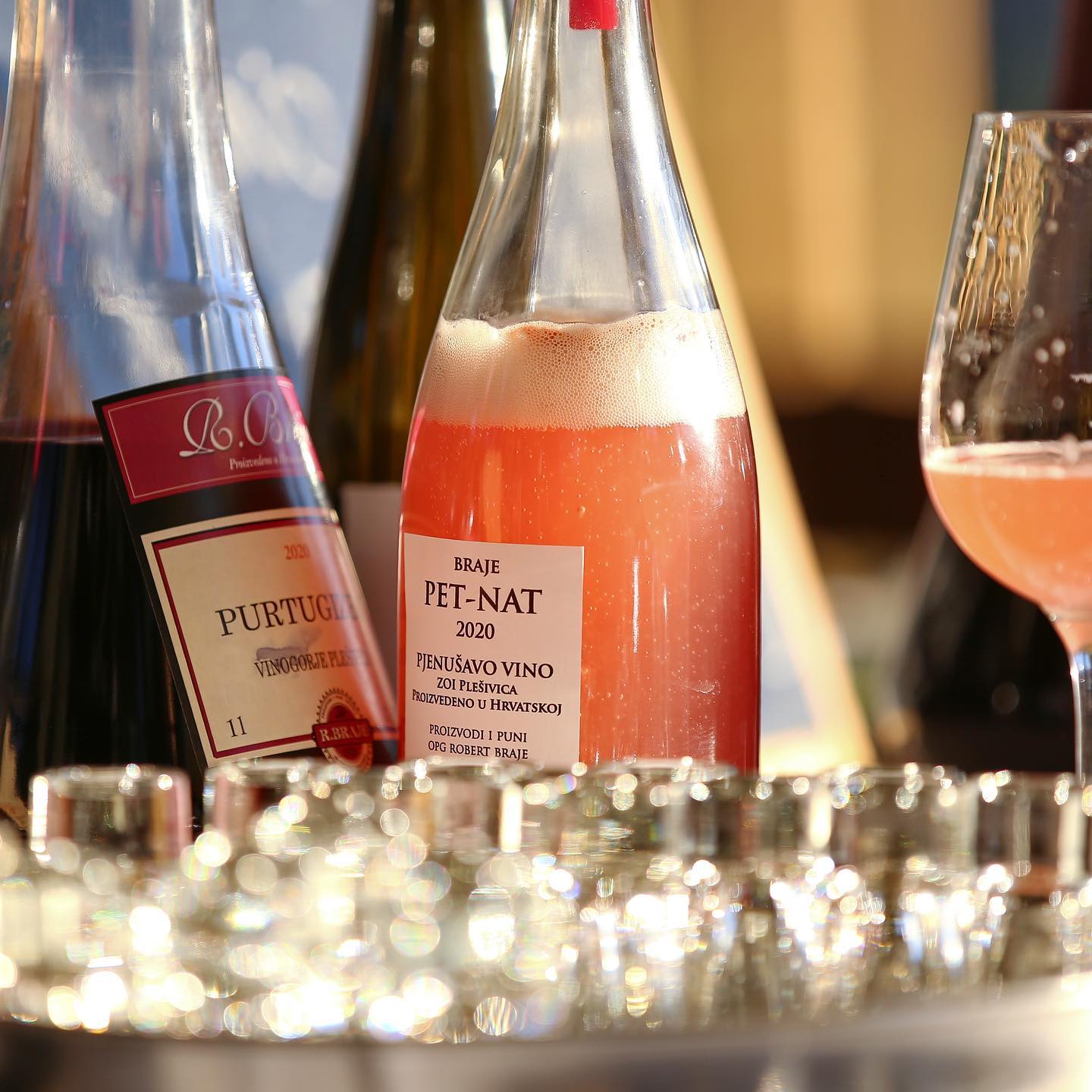
The first event was Via KINO, a screening of the new Bond movie, No Time to Die. No indoor cinemas here, the hit film was shown in a field in the Braje vineyard in Pelsivica. Bales of straw provided a more natural seating arrangement, and the evening featured young Portugiesac wines and traditional roasted chestnuts. Additional sustenance was provided by Marin Medak and his Food Truck.

The event kicked off at 15:00, with several hours of mingling, wine tasting and enjoying the beautiful nature before 007 took over at 18:00.
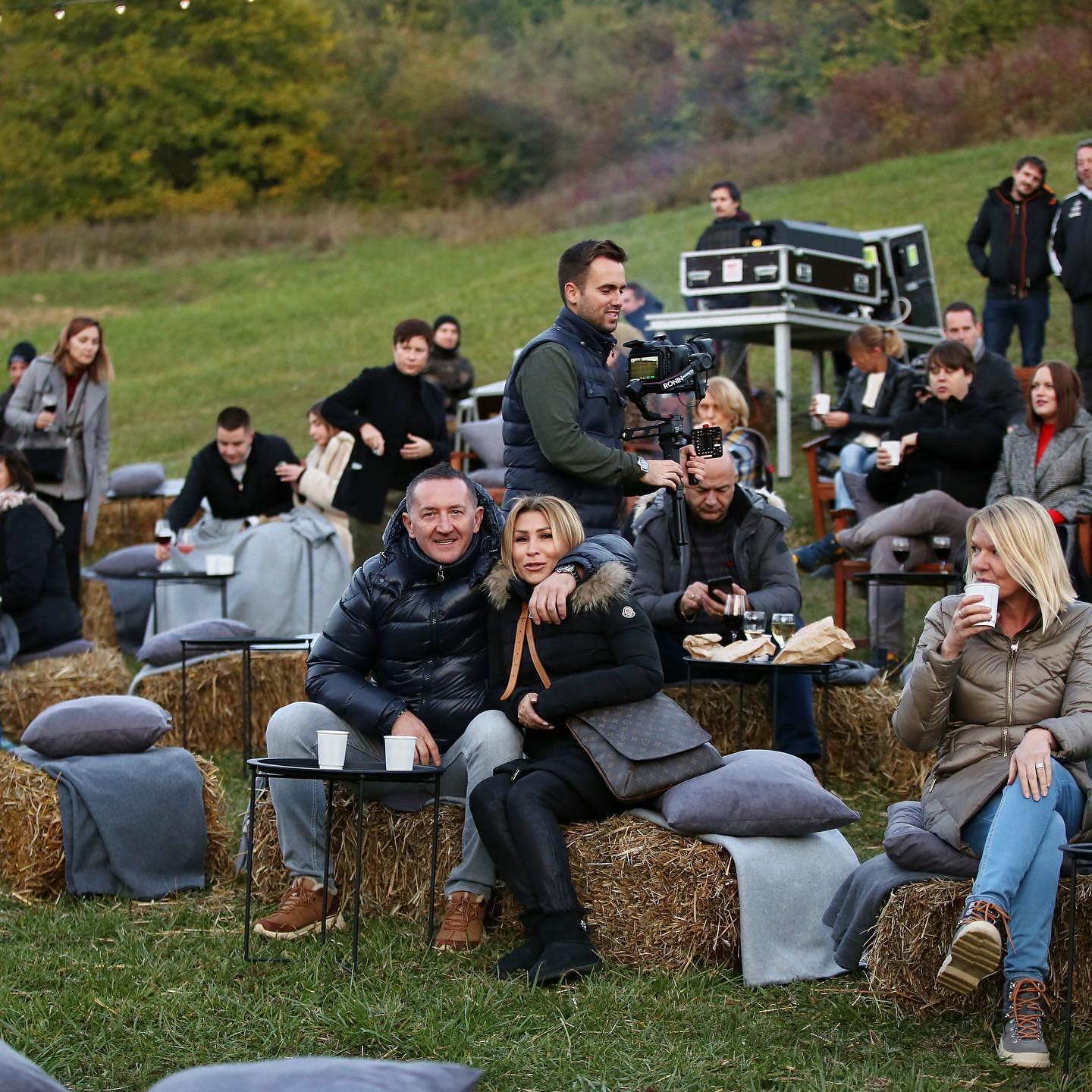
Via KINO will be repeated next Saturday in Velika Gorica, with Via NOTE tonight in Sveta Ivan Zelena, where live music will accompany the wines of Litterarii in Nespes. Via ART will take place on November 6 in Samobor.
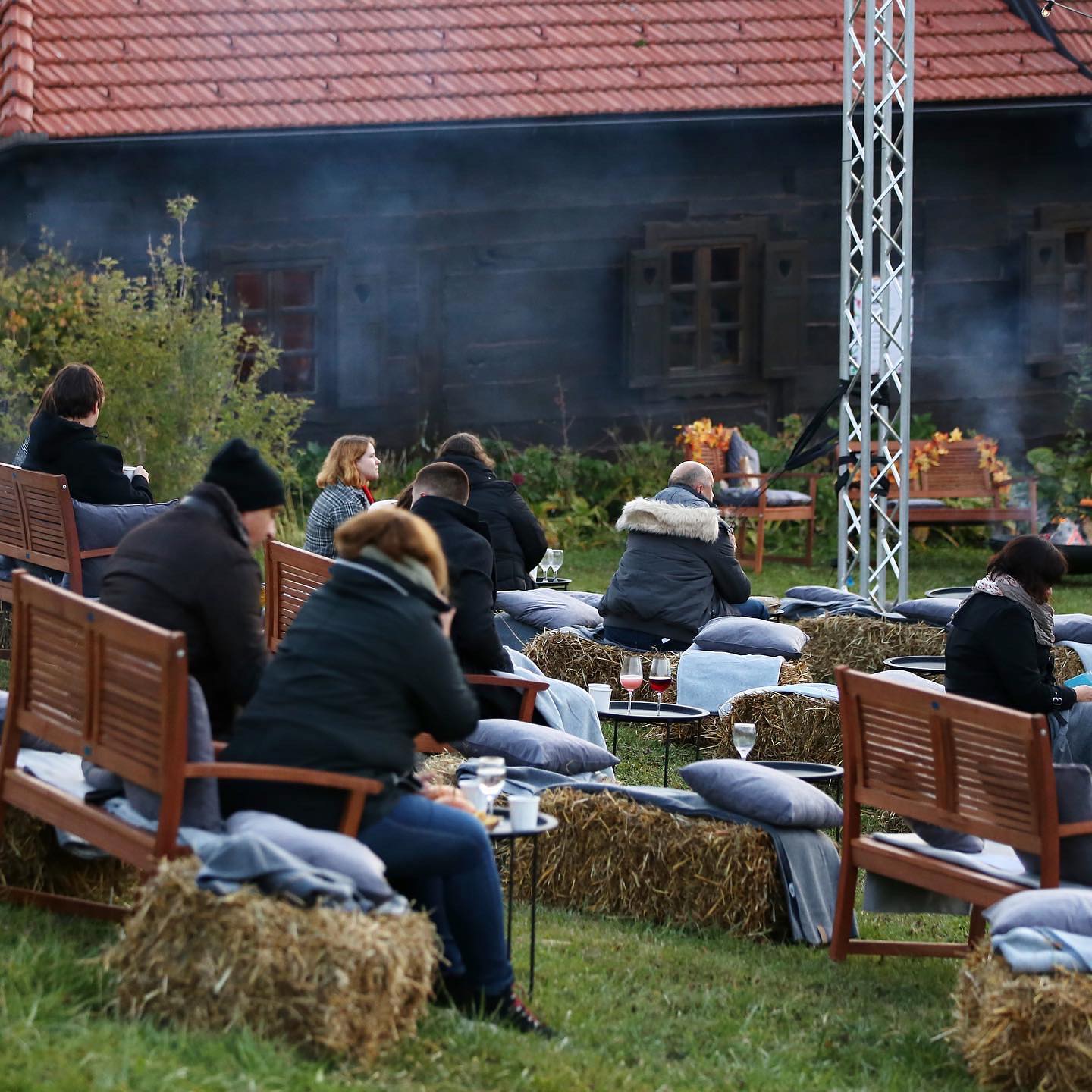
All through the month, until November 15, Via VINARIA will see the 50 or so wineries on the Zagreb County wine roads open their doors every Friday and Saturday.
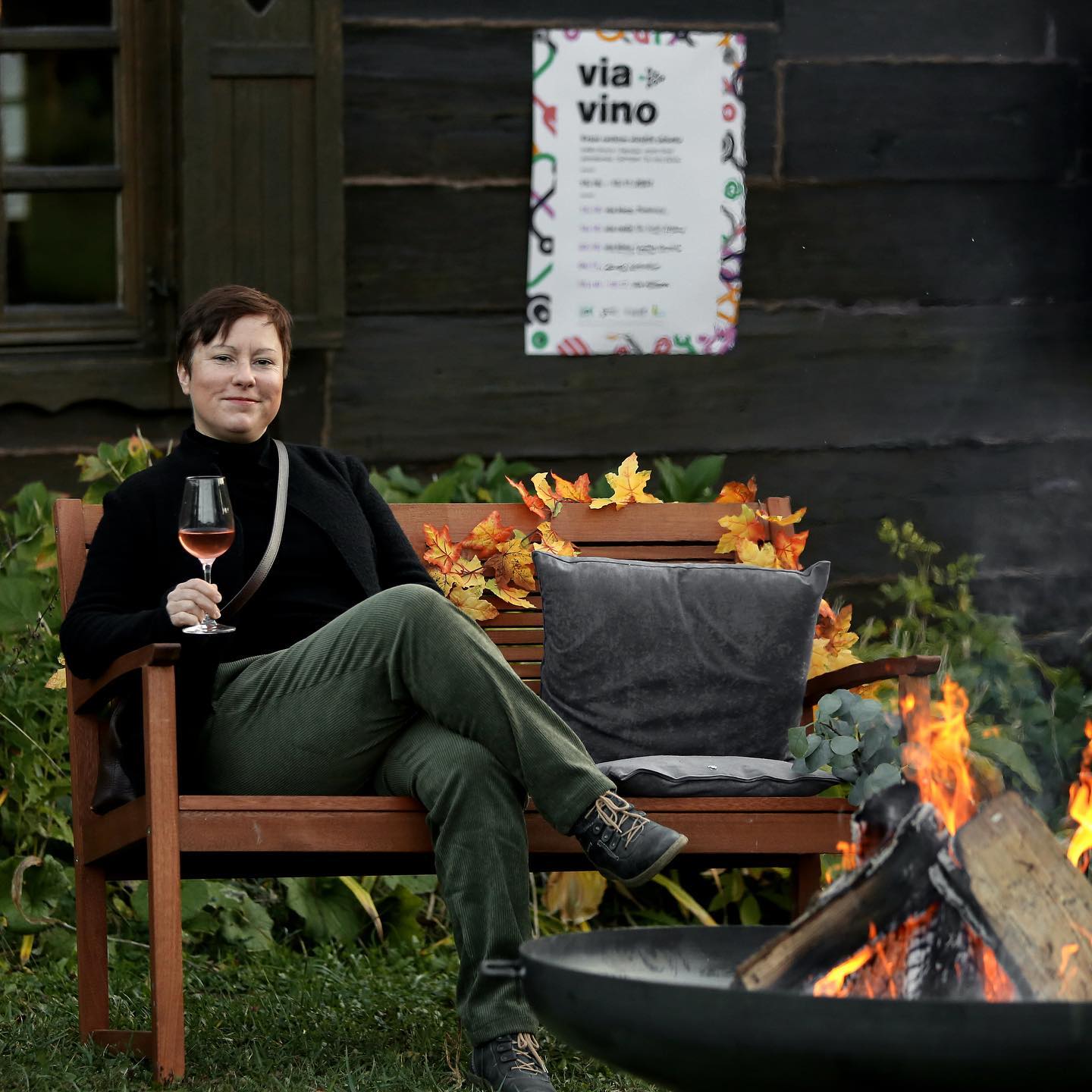
You can learn more about the Via VINO programme here, as well as enjoying more photos from yesterday below.
